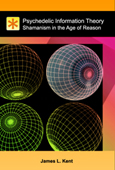
Appendixes : Bibliography
The Dream Drugstore: Chemically Altered States of Consciousness
Hobson, J. Allan; MIT Press, 2001.
Chapter 1: Hobson's text is included here because of his discussion of the serotonin/acetylcholine modulatory gate that switches between waking and dreaming. This model is presented in the AIM state description of consciousness.
Chapter 4: In order for information to be stored in memory the serotonergically modulated forebrain must be online and queuing information into the medial temporal lobe for storage. If the brain is hallucinating that means memory is modulated by acetylcholine for output, not input, and memory formation is effectively blocked until the forebrain becomes dominant again.
--
In this book J. Allan Hobson offers a new understanding of altered states of consciousness based on knowledge of how our brain chemistry is balanced when we are awake and how that balance shifts when we fall asleep and dream. He draws on recent research that enables us to explain how psychedelic drugs work to disturb that balance and how similar imbalances may cause depression and schizophrenia. He also draws on work that expands our understanding of how certain drugs can correct imbalances and restore the brain's natural equilibrium.
Hobson explains the chemical balance concept in terms of what we know about the regulation of normal states of consciousness over the course of the day by brain chemicals called neuromodulators. He presents striking confirmation of the principle that every drug that has transformative effects on consciousness interacts with the brain's own consciousness-altering chemicals. In the section called "The Medical Drugstore," Hobson describes drugs used to counteract anxiety and insomnia, to raise and lower mood, and to eliminate or diminish the hallucinations and delusions of schizophrenia. He discusses the risks involved in their administration, including the possibility of new disorders caused by indiscriminate long-term use. In "The Recreational Drugstore," Hobson discusses psychedelic drugs, narcotic analgesia, and natural drugs. He also considers the distinctions between legitimate and illegitimate drug use. In the concluding "Psychological Drugstore," he discusses the mind as an agent, not just the mediator, of change, and corrects many erroneous assumptions and practices that hinder the progress of psychoanalysis.
About the Author
J. Allan Hobson is Professor of Psychiatry at the Harvard Medical School and Director of the Neurophysiology Laboratory at the Massachusetts Mental Health Center.
Web Resource: mitpress.mit.edu
Keywords: dreaming, dreams, actylcholine, AIM
|
This reference is included in the following Listings: |
